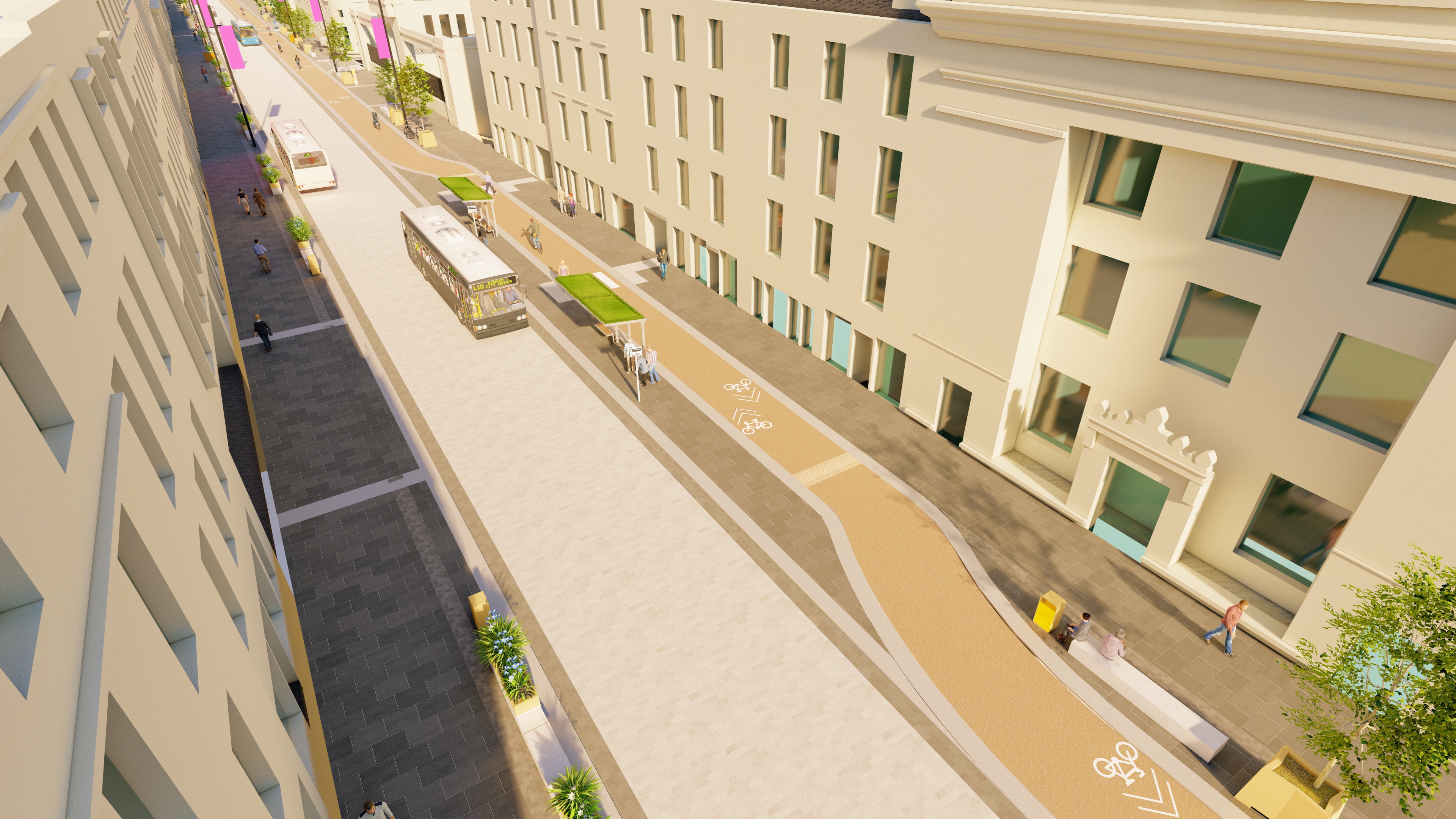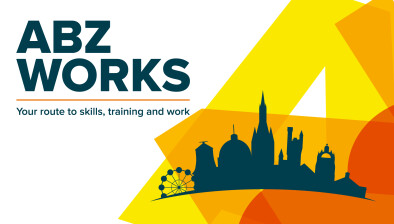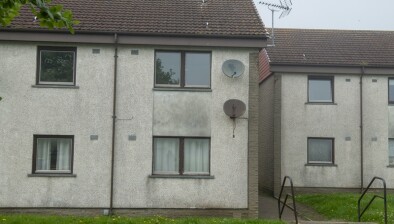Segregated cycle lane design agreed for Aberdeen’s Union Street

An updated design for incorporating buses and a segregated cycle lane for the entire length of Union Street as part of Aberdeen’s City Centre Masterplan has been agreed by an Aberdeen City Council committee.
The members on Urgent Business Committee approved a report which outlined how the new design was reached after consultation with key stakeholders including public transport operators and the Disability Equity Partnership (DEP) which has resulted in mitigations to the design.
The committee agreed council staff are to continue engagement with key stakeholders for developing the next stage, the RIBA (Royal Institute of British Architects) Stage 4 Technical Design.
Convener of the Finance and Resources Committee, Councillor Alex McLellan, said: “The council is committed to regenerating the city centre and this first phase will provide improved public space on Union Street, between Market Street and Bridge Street, which will complement the proposed Aberdeen Market development.
“There is a real need to reimagine Union Street, and the wider city centre, to ensure it is somewhere people will want to live, work, raise a family or visit moving forward which is exactly why we are driving forward with creating better public spaces, much needed segregated cycle lanes, as well as improved bus stops.”
Council co-leader and committee vice-convener, Councillor Ian Yuill, added: “The updated design for Union Street including a segregated cycle lane will make Union Street both a more attractive place to spend time and a safer place for cyclists.
“I look forward to the hearing updates on the next stages of the project.”
The report to committee said after instruction from a previous committee, flexibility in design influenced the RIBA Stage 4 Technical Design process, giving rise to the opportunity to include a segregated cycle lane in Union Street Central.
The report said after discussions and a workshop with key stakeholders including public transport operators and DEP, a preferred option emerged for cycling on Union Street with a bi-directional cycle lane on the north side of the street.
The report said DEP expressed specific concerns regarding people with protected characteristics being able to safely cross an active cycle lane to access bus stops and the importance of a consistent design in the streetscape and, at a further workshop with members of the group, potential mitigation measures were agreed.
These mitigation measures include, but are not limited to:
- Crossings to access bus stop locations to be extra wide and centrally located where there are two bus shelters at the bus boarding areas
- The cycle lane could be narrowed at crucial points to slow cyclists
- Rumble strip on cycle lane to alert cyclists to a changing environment and create noise to alert pedestrians
- Contrasting colours in cycle lanes and at crossing points
- Chicanes on the cycle lane approach to bus stops to slow cyclists
- Kerb and pavement detailing to guide people to the crossing points
- Scale of bus islands to enable comfortable congregation (standing, wheelchair users, buggies etc and seating)
- Explicit signage (e.g. for cyclists countdown signs to bus stop 3,2,1 )
- Commitment to extensive behaviour change and public information to be shared in advance of completed works
- Commitment to make our own best practice
- Commitment to ongoing engagement with DEP throughout the remainder of the technical design stage.
After a request from DEP, a full-scale mock-up of a typical cycle lane/bus boarding was set up in Marischal College quad last week to enable their members to better understand the spatial arrangements. DEP members and cyclists attended a joint session with council staff to explain how the new road layout would work.
The project will support the City Centre Masterplan’s infrastructure strategy for bus priority measures aimed at removing the impact of congestion on bus journey times through the city centre, and also encouraging more active travel in the area by walking or wheeling.
















